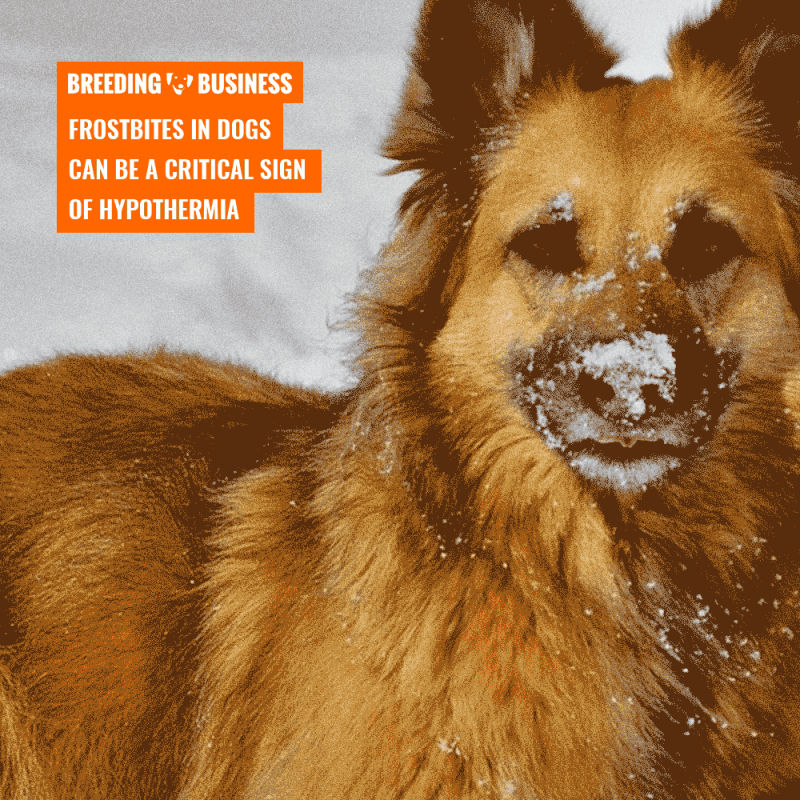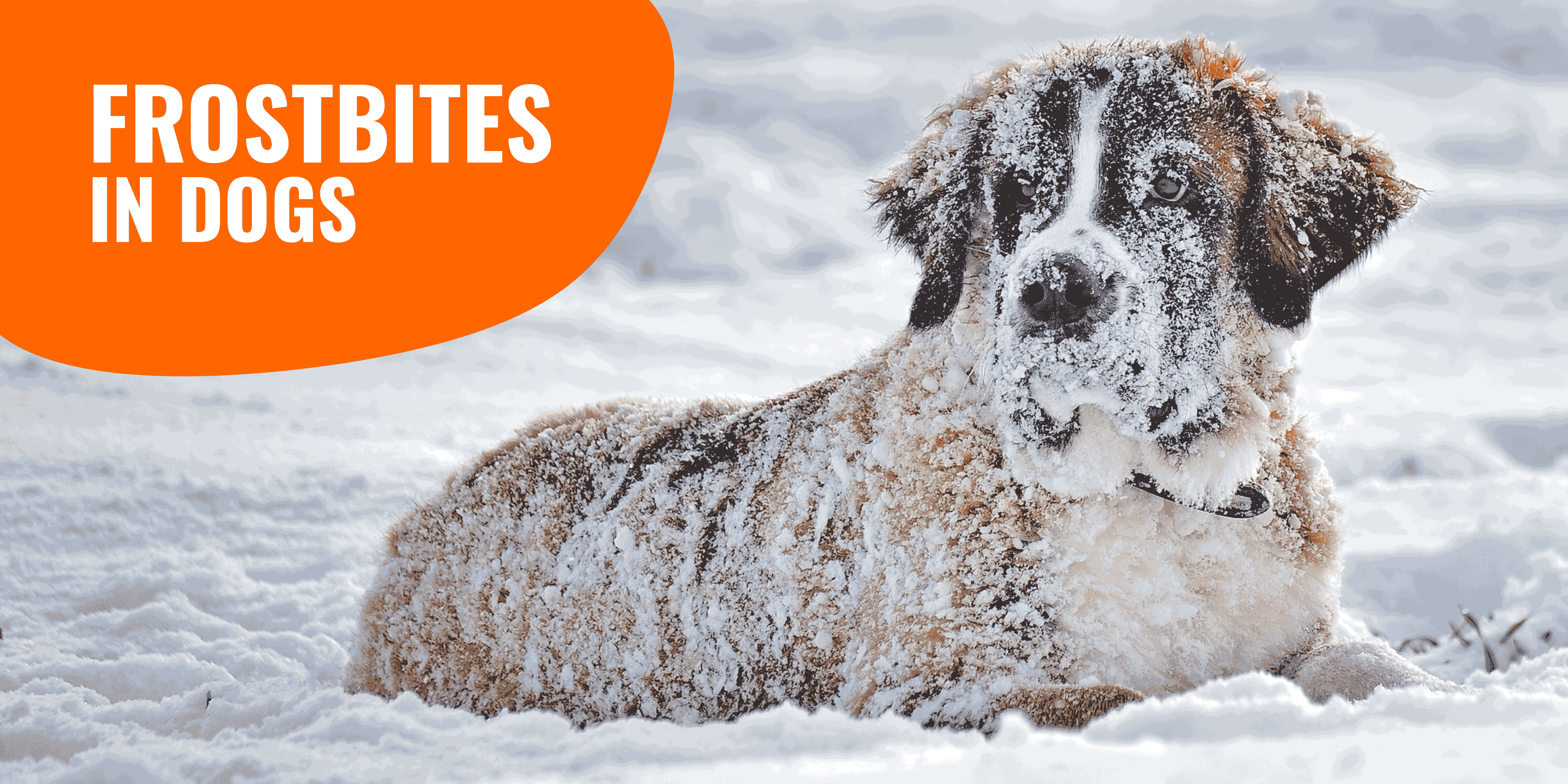What Are Frostbites on Dogs?
Frostbite on dogs, also known as congelatio, is a condition that happens when a dog’s skin and tissue get damaged because of extreme cold. Normally, a dog’s fur keeps them warm in the winter. However, if the temperature drops below 32 degrees Fahrenheit, the cold can stop blood flow to parts of their body, leading to frozen tissue that may be permanently damaged.
Where Are Dog Frostbites Most Likely to Appear?

How To Prevent Frostbites on Dogs?
The best preventative measures one can take for dog frostbites is to keep the dog out of extremely cold temperatures where he will be more vulnerable to suffering a case of frostbite and buy him warm clothing. If you happen to be in the snow or in an extremely cold place, frostbite in dogs can be preventable by lessening the exposure to the temperature by allowing the dog to go indoors every now and then.
Winter Clothing
Various dog apparel is sold on the market that can certainly decrease the chances of dog frostbite.
You can purchase warm coats, dog snoods and neck warmers, hats, boots, and socks in order to sustain their blow flow in order to keep them warm, especially for those types of breeds who tend to have thinner coats or are more sensitive to cold conditions such as the smaller breeds.
Avoid Some Drugs
Some medications, such as beta-blockers for example, and certain health conditions such as diabetes, increase the risk of frostbite on dogs. Heart diseases and other medical issues that impair the blood flow also increase the chances. If your dog suffers from any such diseases, then they should not be exposed to the cold for long periods of time. Senior dogs of an older age should also be taken into consideration as they are more susceptible to the cold as well.
Diet Considerations
In addition, you can help your dog prevent frostbite by helping to maintain a great caloric consumption to fuel their bodies acting as a furnace to circulate heat in their bodies. Keep your dogs well hydrated at all times and always check their water source is not freezing. If your dog is an outside dog, provide outdoor housing shelter that keeps them well insulated and protected from cold, wind, and rain with adequate ventilation.
What Are the Symptoms of Frostbites in Dogs?
There are several signs in which one can detect frostbites in dogs including:
- icy extremities,
- tissue discoloration,
- shaking or shivering,
- blisters,
- swelling,
- pain, and
- brittle areas.
A dog’s extremities contain warm blood that systematically flows. However, when the warm blood leaves those areas or is drastically reduced due to the cold, the tissue begins to freeze and eventually dies out. This ultimately leads to loss of tissue and limbs such as feet, ears and even tails.
Canine frostbite is a serious issue and a dog’s body temperature during extremely cold temperatures should always be monitored.
The snow and frosty seasons may pose a risk to your dog so watch for symptoms of frostbites on dogs such as the skin becoming very pale often displaying a blueish white hue. This is an indication of lack of blood flow. When you touch the affected place in question, such as paws, it will feel cold and brittle and it may cause pain in the dog.
Once you notice the common signs of dog frostbites and it is obvious your dog is suffering, immediate action must be taken as it can lead to eventual cut off of blood flow. After treating this condition by warming up the affected area, it will become red as blood flow continues to make its way back, and you may notice some swelling and peel in the area.

How Are Canine Frostbites Diagnosed?
In a professional diagnosis, a veterinarian will examine the affected area very closely looking to see the current state of the tissue in the surrounding area. The exam will also take into consideration the amount of time the dog was exposed to the extreme temperatures. In order to assess if any internal damage has been done by the frostbite, blood tests and a urinalysis will be conducted.
A personal diagnosis can be made on the spot as soon as the affected dog shows any of the common symptoms of canine frostbite even before any medical attention is sought.
Evolution of Dog Frostbites
In most cases, you will have to be vigilant and look for the warning signs including the discoloration of the affected body part, swelling, skin ulcers or skin that is blackened and dead.
Once the condition has worsened and the tissue has died you will notice a dark blue and black color, a foul smell, pus forming, and a secondary bacterial infection.
After a period of several days, you will notice the skin begin to fall off. Ensure your dog does not go into hypothermia as this can prove to have fatal consequences.
In this case, watch for signs of hypothermia such as extremely low body temperature, lethargy, stiff movements, excessive shivering, and shallow breathing. In any case, always seek medical attention as soon as possible and do not wait when in doubt.
How To Treat Frostbites on Dogs?
What To Avoid?
Many people mistakenly believe that you should submerge dogs into a bath but do not do this as this can cause the body temperature to actually decrease more. Finally, do not give your dog any medications nor pain relievers in an attempt to soothe him as most are toxic to dogs.

